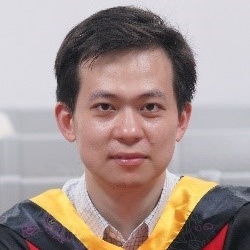Research Progress on Lithium–Sulfur Batteries
A special issue of Molecules (ISSN 1420-3049). This special issue belongs to the section "Materials Chemistry".
Deadline for manuscript submissions: closed (30 November 2023) | Viewed by 4732
Special Issue Editors
Interests: Li-S battery, Li metal anode; Na/Zn-ion battery; supercapacitor; heterojunction; 3D nanostructure
Interests: 3D micro-nano structure; Zn-ion battery; Li/Zn anode; Li-S battery; flexible energy storage
Interests: novel secondary batteries; Li/Na/Zn-based batteries
Special Issues, Collections and Topics in MDPI journals
Special Issue Information
Dear Colleagues,
Lithium-Sulfur (Li-S) batteries have become one of the most competitive systems in the next generation of high-performance batteries due to their high theoretical capacity (~1672 mAh g-1) and energy density (~2600 Wh kg-1). However, Li-S batteries face two main problems that cannot be ignored. (1) The diffusion of soluble lithium polysulfide intermediates and the slow reaction kinetics lead to the rapid decline of the cycle capacity and unsatisfactory charging-discharging behavior of the battery. (2) The active lithium anode will produce undesirable deposition and stripping, which leads to a series of problems such as lithium dendrite, thus reducing the battery life and even bringing safety risks. Therefore, the research of Li-S batteries is of great practical significance. In recent years, a number of strategies have been developed to alleviate above problems. This Special Issue seeks original contributions on the preparation of anode and cathode materials, electrolyte/separator modification, and structural design of advanced Li-S batteries, aiming to effectively improve the electrochemical performance of cell. This special issue also focuses the latest research and advanced concept reviews of Li-S systems.
Dr. Pu Jun
Dr. Pan Xue
Dr. Lianbo Ma
Guest Editors
Manuscript Submission Information
Manuscripts should be submitted online at www.mdpi.com by registering and logging in to this website. Once you are registered, click here to go to the submission form. Manuscripts can be submitted until the deadline. All submissions that pass pre-check are peer-reviewed. Accepted papers will be published continuously in the journal (as soon as accepted) and will be listed together on the special issue website. Research articles, review articles as well as short communications are invited. For planned papers, a title and short abstract (about 100 words) can be sent to the Editorial Office for announcement on this website.
Submitted manuscripts should not have been published previously, nor be under consideration for publication elsewhere (except conference proceedings papers). All manuscripts are thoroughly refereed through a single-blind peer-review process. A guide for authors and other relevant information for submission of manuscripts is available on the Instructions for Authors page. Molecules is an international peer-reviewed open access semimonthly journal published by MDPI.
Please visit the Instructions for Authors page before submitting a manuscript. The Article Processing Charge (APC) for publication in this open access journal is 2700 CHF (Swiss Francs). Submitted papers should be well formatted and use good English. Authors may use MDPI's English editing service prior to publication or during author revisions.
Keywords
- compound sulfur cathode
- lithium polysulfide catalysis
- shuttle effect
- lithium anode modification
- design of electrolyte
- structure optimization
- theoretical calculation
- advanced characterization








